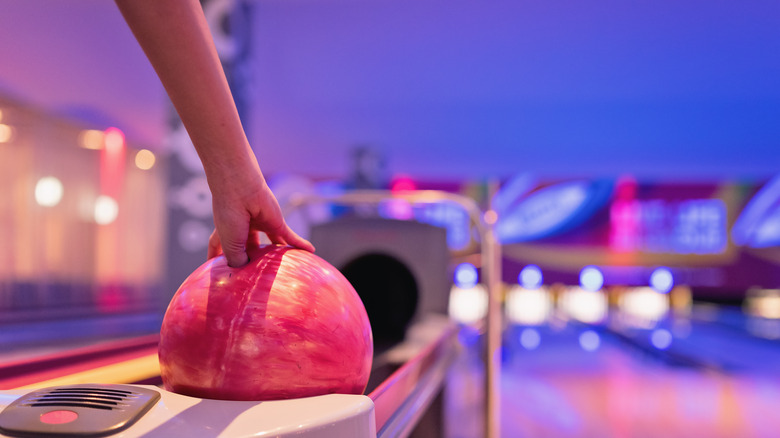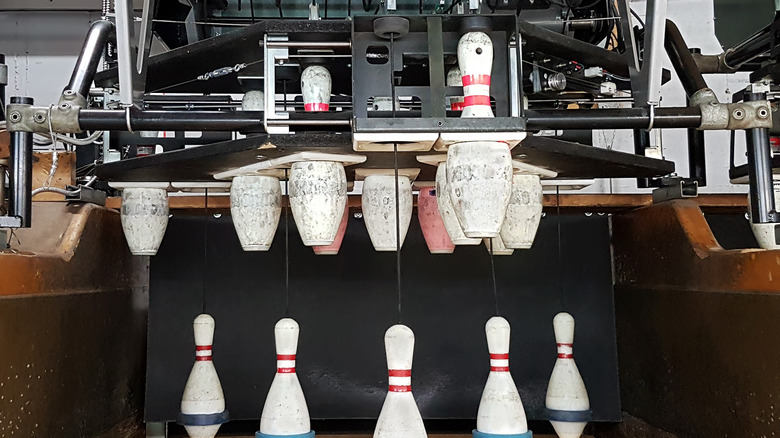Here's What Happens To The Bowling Ball After You Hit A Strike
The pinsetter is to bowling what the ski lift is to skiing or the golf cart is to golf: a surprisingly complicated machine that takes some of the actual work out of a popular sport, turning it from something physically demanding into something that can be done easily even by kids at birthday parties. The machinery is so ubiquitous that we take it for granted, but imagine how physically demanding bowling was before its invention: After every time you threw the ball, you'd have to literally chase after it, walking down to the end of the lane to collect it, pick up the knocked-over pins, and (if it was the end of the frame) reset all 10 of them by hand.
Now, of course, machinery does all of that — not only returning your ball, but cleaning up the pins, resetting them, and even keeping score for you (which is nice, but, let's be honest, that's why you have no idea how to add). It's kind of an amazing device, but to most of us, it's a black box. Here's how it works.
How pinsetters work: conveyor belts, 'elevator wheels,' and a super-fun roller coaster for your ball
As this 2008 YouTube video by Matt Rittman shows, there's some surprisingly sophisticated stuff going on behind the back wall of the alley. When your ball hits the pins, it (along with, ideally, the knocked-over pins) falls into a collection area behind the deck. The bottom of the collection area is a conveyor belt that sweeps the pins back under a low barrier; because the ball can't fit under the barrier, it finds its way into a separate hole.
The sweep — that bar that grabs knocked-over pins — comes down; the pinsetter grabs the still-upright pins, and the remaining pins are swept back to the conveyor belt. Meanwhile, the ball gets pushed up a very steep track via a "ball accelerator"; once it reaches the top of the ramp, it returns purely by force of gravity.
The pins are brought to the top of the device via an "elevator wheel" — essentially a wheel with little scoops designed to grab them (via Matt Bowlin, also on YouTube) — and dumped into a "pin distributor," which puts them into the pinsetter's holes via a system of tracks and funnels. Pins are bottom-heavy, so they always come out upright (via How It Works). Then, after you throw your second gutter ball of the frame, the pins are lowered back where they go.
So there you have it. Think about all that next time you're wearing ugly shoes and choking on decades-old cigarette smoke. Or the next time you go bowling.

